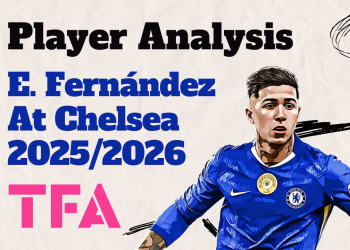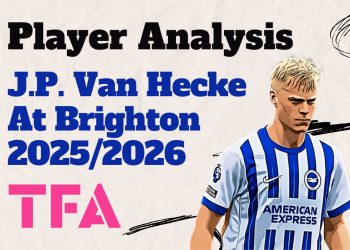Before the international fixtures, Manchester City played against Wolves at the Etihad Stadium. While most of us were expecting another routine victory for City, Wolves instead used their strong performance to keep City silent. They became the first team to grab all three points at City’s home ground in 2019.
In this tactical analysis, we will show you the tactical battle between Pep Guardiola and Nuno Espírito Santo. This analysis includes the defending of Wolves, how City attacked, and how these tactics resulted in the triumph of Wolves in the Premier League.
Lineups

City played in a 4-3-3 formation and there were some changes from the Champions League game against Dinamo Zagreb. Benjamin Mendy was injured and this was the first time for João Cancelo to start as a left-back for City. Given the current injury crisis at the centre-back position, Fernandinho and Nicolás Otamendi partnered at defence. Kyle Walker was back into the squad, and since Raheem Sterling did not start on Tuesday, he took Bernardo Silva’s left-wing position. Kevin De Bruyne, John Stones were still injured and unavailable.
Wolves did not use their 3-4-3 formation. Instead, they played in a 3-5-2 formation with Adama Traoré starting as a right wing-back. Romain Saïss started as a left centre-back and partnered with Conor Coady and Willy Boly. One of the changes to the squad that featured in the Europa League victory in Turkey was Patrick Cutrone starting ahead of Pedro Neto. The others were Rúben Vinagre playing instead of Jonny Otto, and Leander Dendoncker was back into the starting XI.




![RB Leipzig Vs Bayer Leverkusen [1–3] – Bundesliga 2025/2026: How Kasper Hjulmand Tactics Won Out – Tactical Analysis 3 RB Leipzig Vs Bayer Leverkusen Bundesliga 20252026](https://totalfootballanalysis.com/wp-content/uploads/2025/12/RB-Leipzig-Vs-Bayer-Leverkusen-Bundesliga-20252026-1-350x250.png)

![Napoli Vs AC Milan [2–0] – Supercoppa Italiana 2025/2026: How Antonio Conte Tactics Punished Rossoneri Errors – Tactical Analysis 5 Napoli Vs AC Milan 20252026 - tactical analysis](https://totalfootballanalysis.com/wp-content/uploads/2025/12/Napoli-Vs-AC-Milan-20252026-tactical-analysis-1-350x250.png)


![Manchester United Vs Bournemouth [4–4] – Premier League 2025/2026: Why Are Rúben Amorim Tactics Exposed In Transition? – Tactical Analysis 8 Manchester United vs Bournemouth 20252026 - tactical analysis](https://totalfootballanalysis.com/wp-content/uploads/2025/12/Manchester-United-vs-Bournemouth-20252026-tactical-analysis-1-350x250.png)
